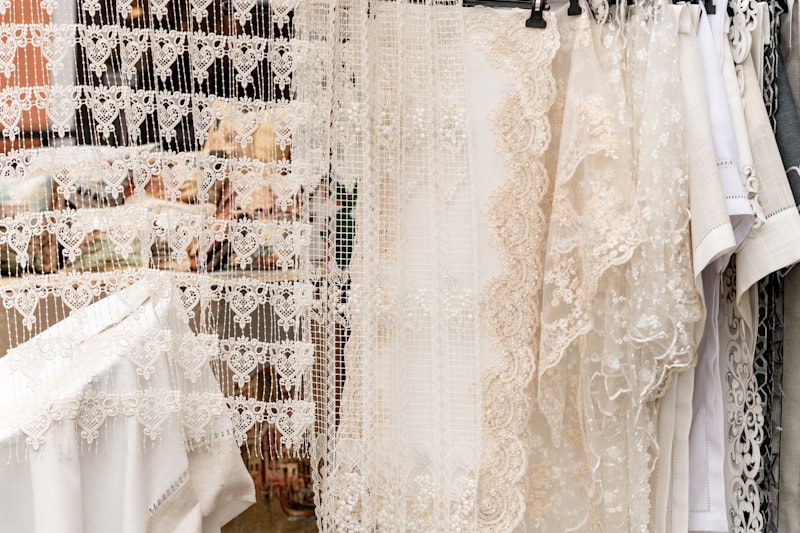Artistry and Craftsmanship in Bridal Gowns: The Essence of Timeless Elegance
Artistry and Craftsmanship in Bridal Gowns: The Essence of Timeless Elegance
In the realm of wedding fashion, bridal gowns hold a special place in every bride's heart. The artistry and craftsmanship in bridal gowns not only define the aesthetics but also embody a rich heritage that speaks volumes about culture and tradition. From intricate lace details to handcrafted embroidery, the journey of creating a bridal gown is a blend of creativity and skilled technique. This article delves into the various aspects of artistry and craftsmanship found in bridal gowns, ensuring brides-to-be are well-informed and inspired.
The Evolution of Bridal Gowns
Bridal gowns have evolved dramatically over the decades. Understanding their evolution sheds light on the artistry and craftsmanship that goes into their creation. Below is a concise historical timeline highlighting the key styles in bridal fashion:
| Era | Style | Highlights |
| Victorian (1837-1901) | Full skirts and high necklines | Use of silk, tulle, and lace; introduction of the white gown |
| Roaring Twenties (1920s) | Flapper-style gowns | Emphasis on movement, beading, and dropped waists |
| Mid-century (1950s) | A-line silhouettes | New Look by Dior; luxurious fabrics and voluminous skirts |
| Modern (2000s-Present) | Diverse styles and personalization | Chic minimalist designs, inclusive sizing, and customizable options |
The Role of Artistry
Artistry in bridal gowns is evident through various creative expressions. Designers incorporate unique elements that reflect the personality of the bride and the theme of the wedding. Here are some key artistic aspects:
1. Fabric Selection
The choice of fabric plays a critical role in defining the gown's overall look and feel. Luxurious silk, flowing chiffon, and delicate lace contribute to the gown's elegance and can significantly influence its drape and silhouette:

2. Embroidery and Appliqué
Hand-embroidered details and appliqué techniques elevate bridal gowns from beautiful to breathtaking. Custom embroidery can include floral motifs, monograms, or cultural symbols, allowing brides to showcase their personal stories.
3. Silhouette and Structure
From ball gowns to mermaid silhouettes, the design structure is vital. Designers often sketch multiple patterns before finalizing the silhouette, ensuring that it flatters the bride’s figure and feels comfortable to wear.
The Importance of Craftsmanship
Craftsmanship is the backbone of any high-quality bridal gown. It refers to the skilled techniques used to bring artistic visions to life. Key aspects of craftsmanship include:
1. Tailoring Techniques
Expert tailoring ensures that the gown fits perfectly. A well-fitted gown can enhance a bride's silhouette, making her feel confident and beautiful. Techniques such as boning, draping, and layering are essential to achieve the desired fit.
2. Sewing Methods
The method of sewing can significantly impact a gown's longevity and quality. Hand-sewing vs. machine-sewing, choice of stitch patterns, and finishing techniques are crucial elements that separate a handcrafted gown from mass-produced options.
3. Attention to Detail
Every seam, bead, and motif on a bridal gown demands meticulous attention. High-quality gowns often feature French seams, hand-cut lace, and hidden zippers, ensuring both durability and aesthetic excellence.
Choosing the Perfect Bridal Gown
As a bride, selecting the perfect gown can be both exciting and overwhelming. Consider the following tips:
- Know Your Style: Research different styles and silhouettes that resonate with your personality.
- Set a Budget: Determine your budget early, but consider investing in high-quality craftsmanship.
- Schedule Fittings: Fittings are essential to achieving your desired look; don’t rush this process.
- Incorporate Personal Touches: Work with designers who allow you to customize elements – it makes a gown truly yours!
Questions Brides Often Ask
When it comes to bridal gowns, many brides have common questions. Here are some typical queries to keep in mind:
- What are the latest trends in bridal gowns?
- How can I personalize my bridal gown?
- What should I consider when choosing fabrics?
- How long should I allow for dress fittings and alterations?
- Are there eco-friendly options in bridal gown designs?
Conclusion: Celebrating Artistry and Craftsmanship
Artistry and craftsmanship in bridal gowns represent an exquisite marriage of tradition and modern aesthetics. As you embark on your wedding journey, remember that every detail of your gown is an opportunity to express who you are. Invest time in understanding various styles, fabrics, and techniques to find a gown that tells your story. The artistry infused in every stitch and the craftsmanship that ensures its perfection will not only make you look beautiful on your special day but also create a cherished memory for years to come. Pay attention to quality and personalization—these are what truly make a bridal gown a masterpiece.
As you explore the world of bridal gowns, may you find the artistry and craftsmanship that resonates with your unique style and vision for your dream wedding.
